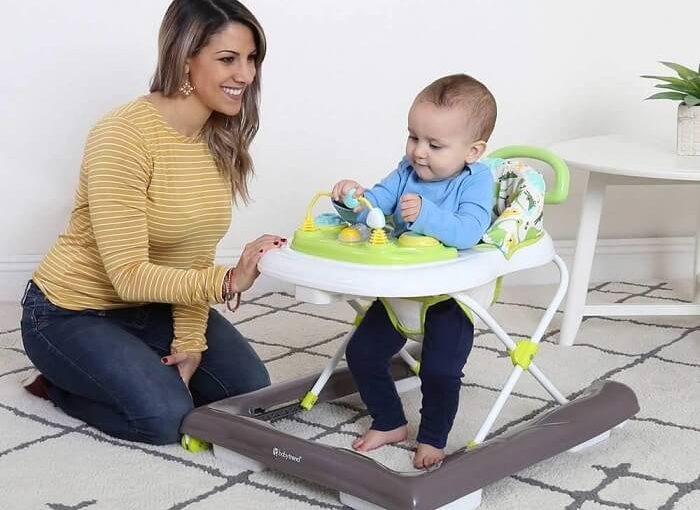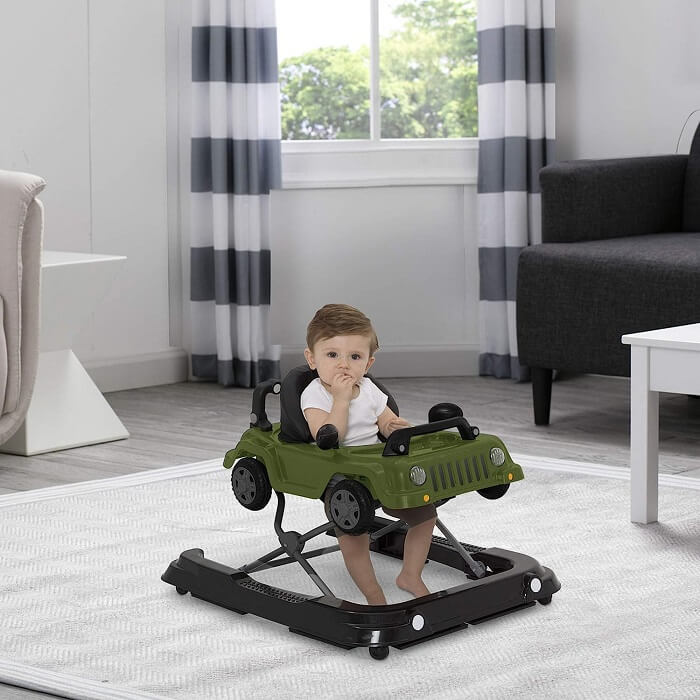Tips on How to Use a Baby Walker Safely?
Baby walkers can be a great tool for helping babies develop their motor skills and explore their surroundings. However, it's important to prioritize safety when using a baby walker to prevent accidents and injuries. In this article, we will discuss tips on how to use a baby walker safely, ensuring your child's well-being while they enjoy the benefits of this useful device.
Baby walkers are wheeled devices that allow babies who can't yet walk independently to move around in an upright position. They typically consist of a seat suspended between a frame with wheels. The seat provides support to the baby while their legs touch the floor, allowing them to propel themselves forward.
What is a baby walker?
A baby walker is designed to assist babies who have not yet developed the ability to walk on their own. It provides them with a way to move around independently while seated in a padded, supportive chair. Baby walkers often have interactive toys and feature to entertain the child as they explore their surroundings.
The benefits of using a baby walker
Baby walkers offer several benefits for both babies and parents. They can help stimulate the baby's physical and mental development by promoting leg muscle strength, coordination, and balance. Additionally, walkers can keep babies entertained and engaged, allowing parents to attend to other tasks while keeping a watchful eye on their little ones.
Safety considerations when using a baby walker
While baby walkers can be beneficial, safety should always be the top priority. Here are some important safety considerations to keep in mind:
Ensuring proper fit and stability
When selecting a baby walker, it's crucial to choose one that is appropriate for your child's age and size. Ensure that the baby's feet touch the floor comfortably and that the walker provides proper support. The walker should be stable and not prone to tipping over.
Supervision and control
Always supervise your baby while they are using the walker. It's important to stay within arm's reach to prevent accidents and respond quickly if any issues arise. Keep in mind that a baby walker should never be considered a substitute for adult supervision.
Safe environment
Create a safe environment for your baby to use the walker. Remove any potential hazards such as sharp objects, hot surfaces, or small items that can be choking hazards. Make sure the area is free of obstacles and that there are no reachable stairs.
Stair safety
Baby walkers should never be used near stairs or steps. Falls from stairs can result in serious injuries. Use safety gates to block access to staircases, ensuring that your baby cannot accidentally enter those areas while in the walker.
Flooring and surface considerations
Choose an appropriate surface for your baby to use the walker. Avoid using it on slippery or uneven surfaces, as this can lead to accidents. Opt for flat, carpeted areas or use a play mat to provide a stable and safe surface.
Tips on how to use a baby walker safely
To ensure the safe use of a baby walker, consider the following tips:
Choosing the right walker
Select a walker that is suitable for your baby's age and size. Ensure that the walker has a sturdy frame, secure seat, and reliable wheels. Look for walkers that meet safety standards and have positive customer reviews.
Reading the instructions
Before using the baby walker, carefully read and understand the manufacturer's instructions. Familiarize yourself with the recommended age range, weight limit, and any specific guidelines for assembly and usage. Following the instructions will help you use the walker correctly and avoid potential risks.
Clearing obstacles and hazards
Before allowing your baby to use the walker, ensure the surrounding area is clear of obstacles and potential hazards. Remove any sharp objects, low-hanging cords, or small items that could be choking hazards. Keep the space free of furniture with sharp corners or edges.
Avoiding risky areas
Keep your baby away from areas that could pose risks while using the walker. These include kitchens with hot appliances or liquids, bathrooms with water sources, and outdoor spaces with uneven terrain or traffic. It's important to create a safe and controlled environment for your baby's exploration.
Setting limits on usage time
While baby walkers can be entertaining and beneficial, it's essential to limit the amount of time your baby spends in them. Extended use of walkers may delay natural walking development and hinder muscle strength and coordination. Use the walker as a supervised playtime activity rather than a constant sitting position for your baby.
Encouraging proper development
Using a baby walker should complement, not replace, other forms of physical development and exercise. Encourage your baby to engage in tummy time, crawling, and assisted standing to strengthen their muscles and develop balance and coordination. Offer a variety of age-appropriate toys and activities to promote overall development.
Alternatives to baby walkers
While baby walkers can be beneficial, some experts suggest alternative methods to support your baby's development. These alternatives include activity centers, push toys, stationary play centers, and interactive floor mats. These options allow babies to explore and develop their motor skills while in a safe and controlled environment.
Conclusion
Using a baby walker can be a fun and useful experience for both babies and parents. However, ensuring safety is paramount. By following the tips provided in this article, you can use a baby walker safely and promote your baby's physical and cognitive development. Remember to choose the right walker, create a safe environment, supervise your baby, and encourage a balanced approach to their overall development.
FAQs
Can a baby walker replace the need for supervision?
No, a baby walker should never be considered a substitute for adult supervision. It's essential to closely monitor your baby while they are using the walker to prevent accidents.
At what age can babies start using a walker?
Babies can typically start using a walker between 4 and 6 months of age, when they can support their heads and sit upright with minimal assistance. However, consult with your pediatrician for specific guidance based on your baby's development.
Are baby walkers safe for all types of flooring?
Baby walkers are best used on flat, carpeted surfaces. Avoid using them on slippery or uneven flooring, as this can increase the risk of accidents.
How long should my baby use the walker each day?
It is recommended to limit the usage time of the baby walker to 15-20 minutes per session, several times a day. Remember to provide other forms of physical activity and developmental opportunities for your baby as well.
What are some signs that a baby walker may not be suitable for my child?
Signs that a baby walker may not be suitable for your child include excessive leaning to one side, difficulty maneuvering, or frustration. If you notice any of these signs, consult with your pediatrician and consider alternative options for your baby




